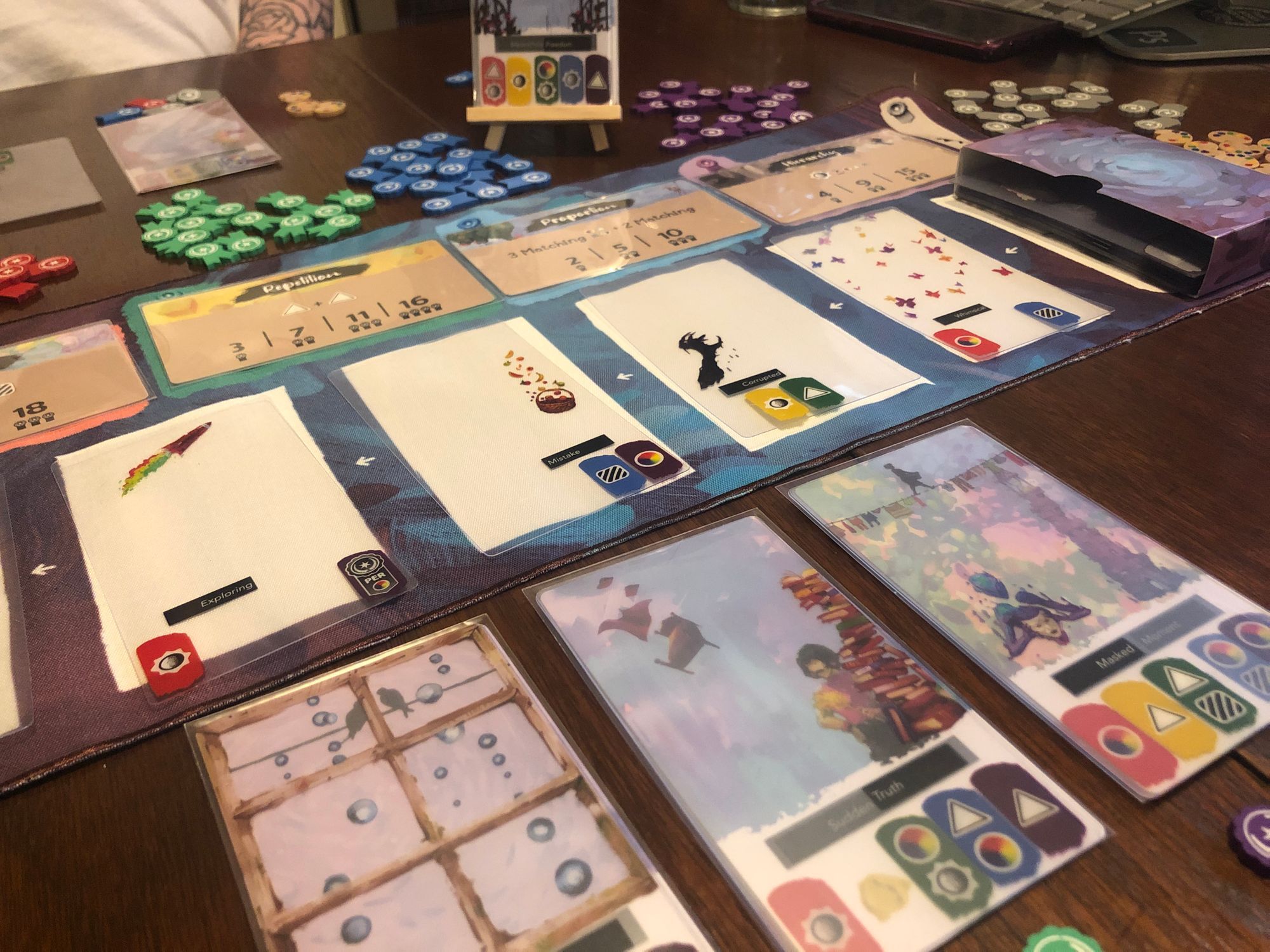In Canvas, you play a painter creating works of art in an attempt to successfully match victory point conditions. You do this by collecting component cards that have painting elements and scoring icons, and then combining them into works of art. Whoever collects and composes the most successful paintings wins.
To start, set out four community objective cards that determine what attributes are the most desirable in created paintings—attributes such as Composition, Hierarchy, and Repetition. Then, deal five community component cards in a row for selection during play. Give each player four inspiration tokens and three sleeved painting background cards, and you’re ready to go.
To play, a player may perform one of two actions on their turn: draw a component card or create a painting. To draw a card, take any of the visible community cards into your hand. The leftmost card is free, but for each card to the left of the chosen card an inspiration token is required as payment. To pay, place an inspiration token on each of the component cards to the left of the chosen one. On subsequent turns, if a component card is chosen that has inspiration tokens on it, the player selecting it may also collect those inspiration tokens and place them into their pool.
To create a painting, a player chooses three component cards from their hand and slides them into the sleeve of one of their background cards. Component cards are transparent except for illustrative elements, title segments, and scoring icons. Each component card has some combination of scoring icons that may overlap one another depending on how they’re stacked.
Once placed, the player compares the visible scoring icons to the community objective cards, earning a ribbon for every fulfilled objective.
Once all players complete three paintings (if some players finish before others, they just wait for everyone to finish up), the game is over. Players then count how many ribbons they have and earn victory points based on how successful their three paintings were in fulfilling the objectives.
The description above does a great disservice to this game, because Canvas is wonderful and you only really understand that once you’re playing. Creating paintings from dozens of component cards results in beautiful little creations, complete with titles, that almost make composition more enjoyable than scoring. There are tons of objective cards, so the game has plenty of replayability. All of the game components are top-notch. Also, it’s super quick; it’s really easy to fit a game in while waiting for other people to show up on game night, or to get something played during a break.
Designed by: Jeff Chin and Andrew Nerger
- Player Count: 1–5
- Playtime: 30 minutes
- Time to Learn: 5 minutes
- Complexity 2/5
- Replayability: 4/5
- MSRP: $40 (this is a guess; we got this via Kickstarter)
Am I happy I bought it?: Definitely. It fits a great little niche I was missing—a game that plays 5, is quick to set up, quick to play, and definitely has some puzzle elements to it.
Written by Brendan Quinn; President of Tri-City Area Gaming. We’re playing games on Discord while COVID’s keeping us home. Come play with us!


